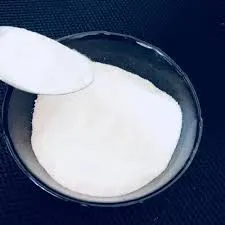
Sep . 30, 2024 00:08 Back to list
Understanding the Applications and Uses of HPMC in Various Industries
What is HPMC Used For?
Hydroxypropyl methylcellulose (HPMC) is a versatile polymer derived from cellulose, a natural polymer widely found in plant cell walls. It has gained immense popularity in various industries due to its unique properties, including its ability to form films, gel, and bind materials together. In this article, we will explore the various applications of HPMC across different fields.
What is HPMC Used For?
In the food industry, HPMC serves multiple functions. It is commonly used as a food additive to improve texture, moisture retention, and overall quality of food products. It acts as a thickening agent in sauces, gravies, and dressings, providing a desirable consistency while also aiding in emulsification. HPMC is also used in gluten-free baked goods to mimic the texture of gluten-containing products, thereby improving the quality of these items. Its ability to retain moisture makes it beneficial for extending the shelf life of certain food products.
what is hpmc used for

The construction industry benefits significantly from HPMC’s unique properties. It is used as a thickener and water-retention agent in cement and gypsum-based products, such as mortars, plasters, and tile adhesives. HPMC enhances workability, ensuring that these materials can be easily applied and spread. It also helps to prevent the premature drying of these mixtures, allowing for longer working times and improved adhesion. Moreover, HPMC can contribute to the formation of a more robust and durable end product.
In the cosmetics and personal care sector, HPMC is used as a rheological modifier and emulsifier. It helps in stabilizing formulations, ensuring that the ingredients blend thoroughly and remain consistent over time. This is particularly important in products like lotions, creams, and shampoos, where a uniform distribution of ingredients is critical for effectiveness. Additionally, HPMC's film-forming properties provide an aesthetic benefit, contributing to the smooth texture and application of these products on the skin or hair.
HPMC also finds applications in the realm of personal care products, where it acts as a binding agent in formulations such as hair gels and styling products. Its ability to form a flexible film allows for styling without excessive stiffness, enabling easier manipulation of hair while maintaining the desired hold.
In summary, Hydroxypropyl methylcellulose is a multifunctional polymer that finds applications in various sectors, including pharmaceuticals, food, construction, and personal care. Its favorable properties, such as non-toxicity, film-forming ability, and moisture retention, make it an indispensable ingredient in numerous formulations. As industries continue to innovate, the demand for HPMC is expected to grow, highlighting its significance in modern manufacturing processes. With its extensive range of applications, HPMC truly embodies the potential of natural polymers in enhancing product performance and quality.
-
Versatile Hpmc Uses in Different Industries
NewsJun.19,2025
-
Redispersible Powder's Role in Enhancing Durability of Construction Products
NewsJun.19,2025
-
Hydroxyethyl Cellulose Applications Driving Green Industrial Processes
NewsJun.19,2025
-
Exploring Different Redispersible Polymer Powder
NewsJun.19,2025
-
Choosing the Right Mortar Bonding Agent
NewsJun.19,2025
-
Applications and Significance of China Hpmc in Modern Industries
NewsJun.19,2025







